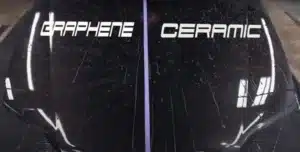Graphene Coatings vs Ceramic Coatings
Introduction:
In the world of automotive detailing, there has been a buzz surrounding the emergence of graphene-based protective coatings. Social media platforms are flooded with discussions, opinions, and claims about the superiority of graphene coatings over traditional ceramic coatings. To get to the bottom of this debate, a popular YouTuber took it upon himself to test and compare these two coating options firsthand. In this blog, we will dive into the transcript of the YouTube video to uncover the truth behind the graphene coatings versus ceramic coatings saga.
Setting the Stage:
The video begins with the host expressing his initial skepticism about graphene coatings and the need to personally test them to understand the hype. He acknowledges the multitude of opinions floating around the internet and decides to conduct his own experiments to shed light on the matter. Additionally, he expresses a genuine interest in delving into the chemistry and properties of these coatings.
Preparation:
Before applying the coatings, the surface is thoroughly prepped using Meguiar’s surface prep to ensure a clean and residue-free surface for accurate testing.
Testing and Observations: Gloss readings are taken on both sides of the surface to establish a baseline. The host then proceeds to apply the graphene coating on one side and a ceramic coating on the other. Upon inspection, the graphene coating appears nearly invisible, while the ceramic coating shows a noticeable haze.
Chemical Resistance Testing:
To assess the chemical resistance of the coatings, a series of chemicals are used, including bug remover, wheel cleaner, all-purpose cleaner, super degreaser, and hydrofluoric acid. Surprisingly, both coatings exhibit similar resistance to the chemicals, with no visible damage or alteration.
Water Spotting Capabilities: After subjecting the coated surface to a quick wash and dry, water spotting is observed on both sides. It is noted that before the test, there seemed to be more water spotting on the graphene-coated side. Various cleaning agents are then used to remove the water spots, and both coatings show comparable results, demonstrating no significant advantage of one coating over the other in this aspect.
Conclusion:
Based on the experiments and observations, it becomes clear that the graphene coatings do not live up to the excessive hype surrounding them. While they offer some benefits, such as an easier application process and higher activity levels, they do not outperform ceramic coatings in terms of chemical resistance or water-spotting capabilities. Ceramic coatings, on the other hand, prove to be reliable and effective options in the realm of automotive protective coatings.
The Importance of Knowledge:
The video and transcript highlight the importance of being well-informed about the products we use as detailers. Understanding the chemistry, properties, and performance of coatings allows us to make informed decisions and effectively communicate the benefits to our customers. It is crucial to avoid falling for marketing buzzwords and instead rely on reliable testing and scientific evidence.
Final Thoughts:
While graphene coatings may have their place in the future of automotive detailing, the current stage of development suggests that they are not yet superior to ceramic coatings. The quest for the perfect protective coating continues, and as the industry evolves, new advancements and breakthroughs may bring us closer to the ultimate solution. In the meantime, as detailers, let us embrace the knowledge at our disposal and choose the coatings that best serve our clients’ needs.

